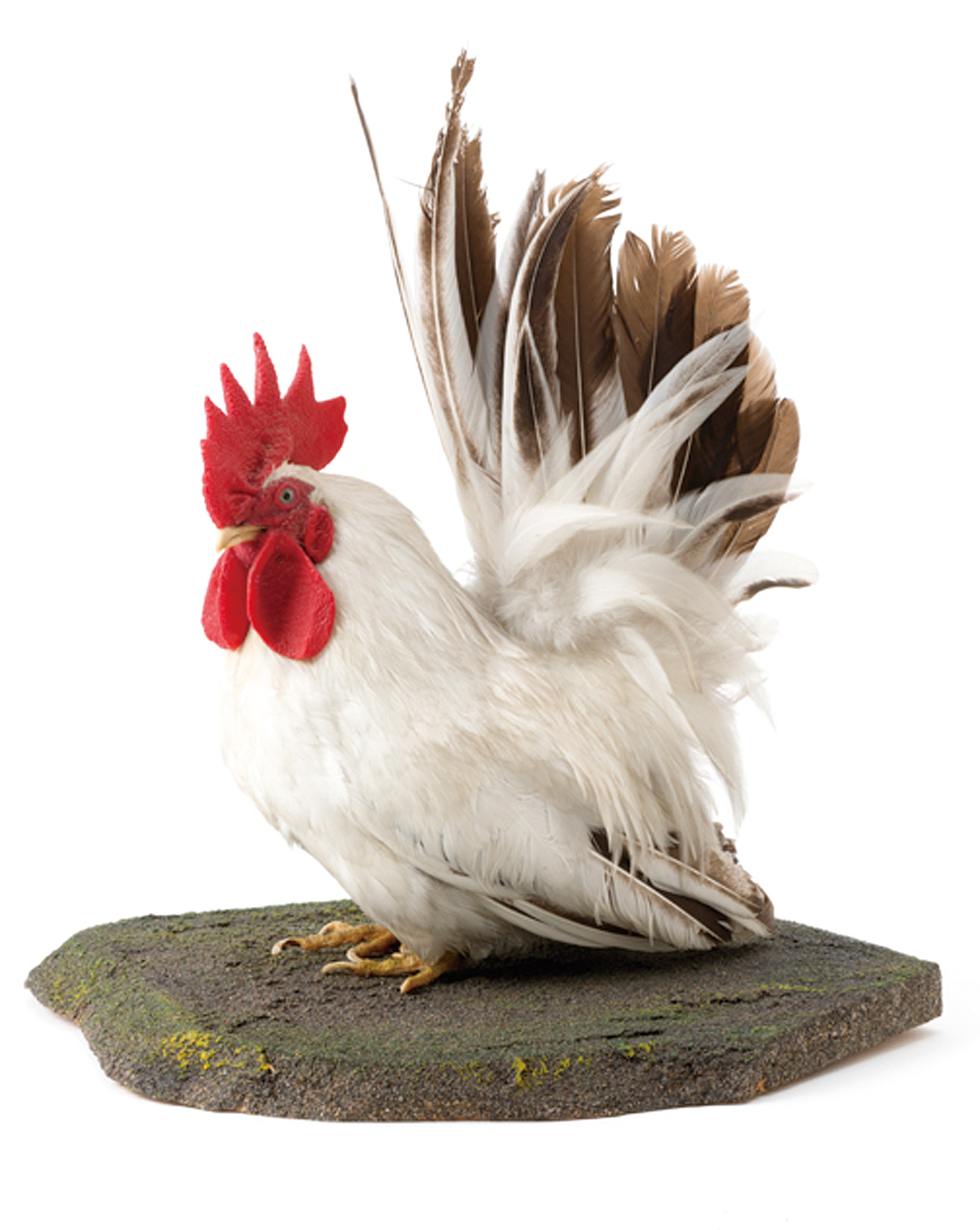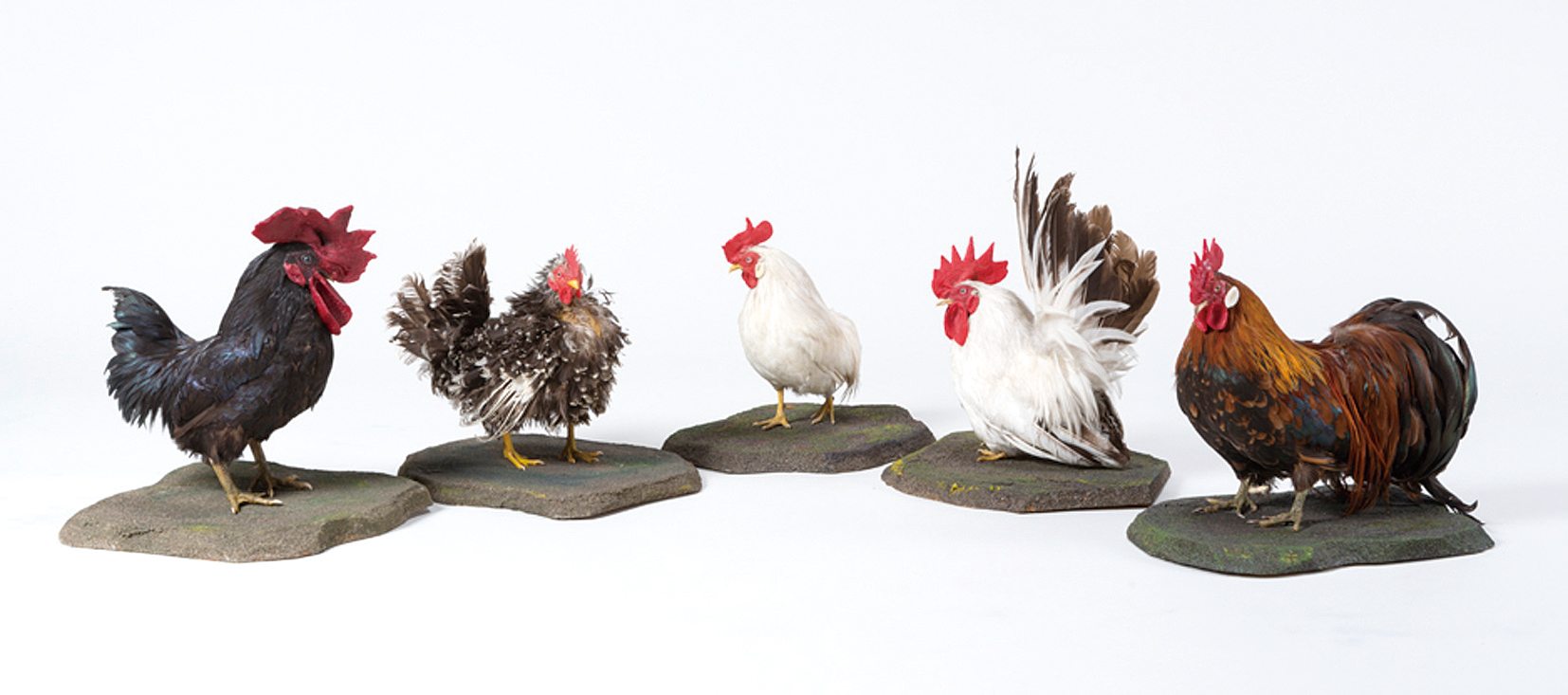E3
Stuffed specimens of Wakei (Japanese domestic fowl)
Takeru Yamaguchi who collected domestic fowls
Yamaguchi Collection is comprehensive collection including the scientific materials and folklore goods of the domestic fowls by Mr. Takeru Yamaguchi. Mr. Yamaguchi worked in Nosan Corporation as a Managing Director. The Collection includes mainly more than 40 stuffed specimens of various breeds of the Japanese domestic fowl, stuffed specimens and skeletons of the European breeds, eggshells of wild birds, and the folk arts about the domestic fowl. Nosan Corporation produces animal feed and eggs. Furthermore, the company had an exhibition facility, Wakei (Japanese fowls) Museum, where he exhibited the Collection.
In 2012, Yamaguchi Collection has been donated to the University Museum of the University of Tokyo from Nosan Corporation. The specimens act as important materials of the study of the domestic fowl. These valuable specimens that show variety of the domestic fowl have been installed in the exhibitions of the University Museum.
In UMUT Hall of Inspiration, mainly the stuffed speimens of the Japanese Chabo are displayed from the Collection. The history of the Japanese Chabo started in Edo era as pet animals. The body weight of the breed is only 500 g even in adult. By improving the growth pattern, it was established as a breed that would be admired on the external appearances. It has big eyes, long flight feathers and short hindlimbs showing cuteness of appearances to breeders. The Japanese Chabo does not have the properties necessary for food production. We considered that the Japanese Chabo has been bred to satisfy the human mind. The ornamental breeds appeared also in the Western countries; however, many ornamental breeds have been developed in Japan by a peace duing the Period of Tokugawa. The fowl, not just for food production, connects a spirit world of humans and animals and are kept carefully as a companion to enrich the human mind today. (Hideki Endo & Mayu Kusumi)


